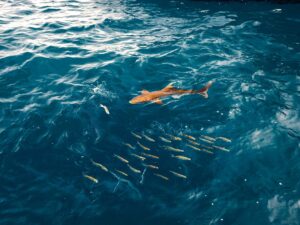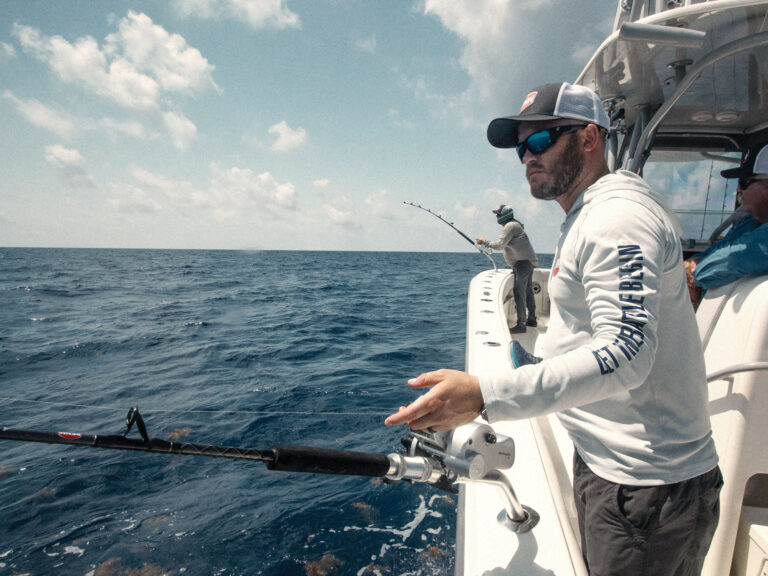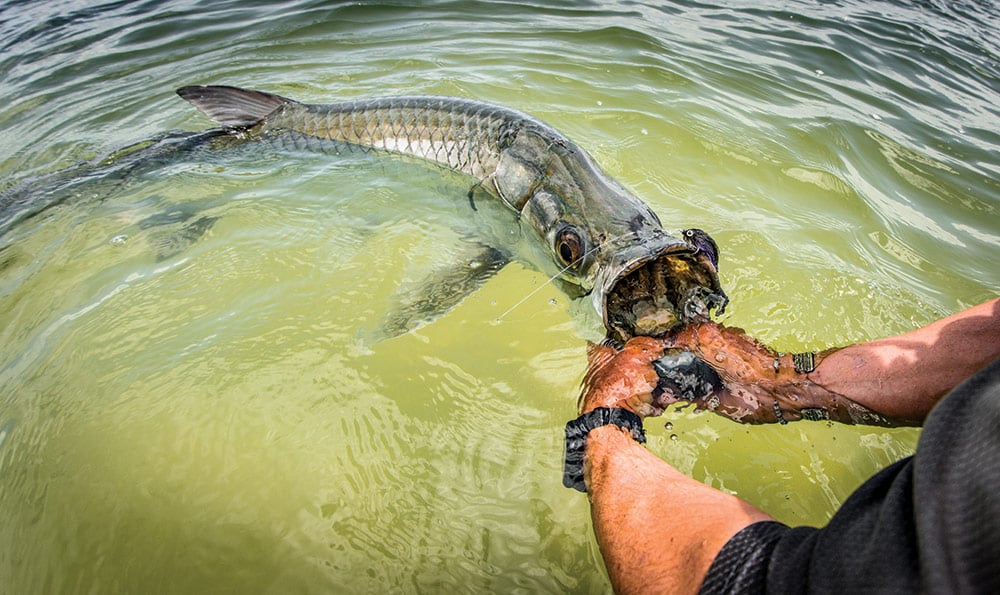
Spectacular jumps and fighting spirit have earned tarpon the moniker of the Silver King. So challenging as a game fish, anglers measure the success of tarpon fishing not by fish landed, but by the number of fish “jumped,” which they readily do at the sting of hook.
Every spring when tarpon migrate through the Florida Keys and up the Gulf and Atlantic sides of Florida, anglers from around the world gather for the special challenge this magnificent trophy game fish offers. Most agree, there is nothing like tarpon fishing.
Tarpon Facts
Tarpon exhibit distinctive characteristics that set them apart as a premier gamefish. Here are some of the cooler tarpon facts to whet your appetite:
- Latin name: Megalops atlanticus
- Swim range: Warm temperate tropical and subtropical waters of the Atlantic Ocean
- Body covered with large, silver scales, with backs ranging from dark green to golden brown
- Tarpon migrate through the Gulf and Atlantic from February through August
- Baby tarpon from 5 to 25 pounds often reside on mangrove shores. Mature tarpon, up to 200 pounds, migrate through inshore waters seasonally
- Largest tarpon ever caught: 286 pounds, 3 ounces from Guinea-Bissau, West Africa.
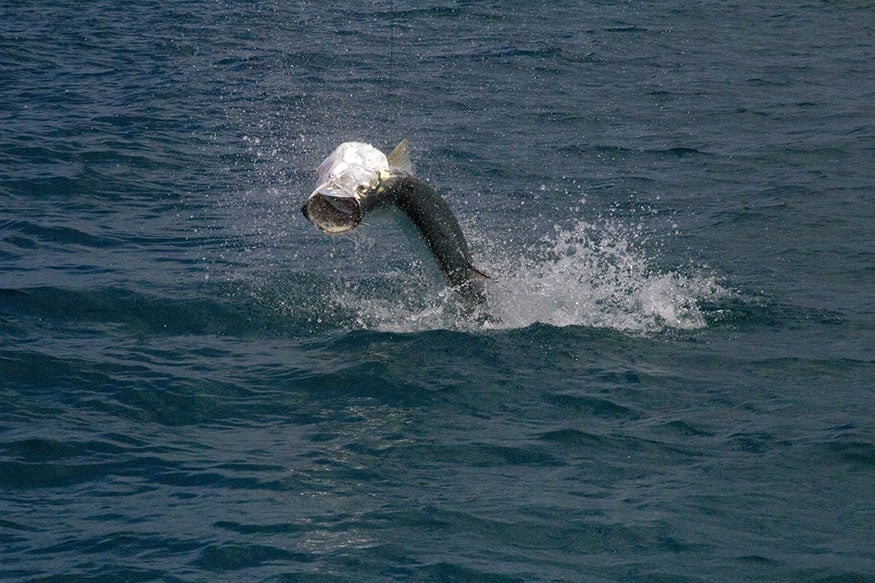
Modify your tackle and technique for picky tarpon…
Best Tarpon Fishing Locations
Although some tarpon reside in South Florida, Mexico and Central America year-around, their annual migration sends thousands of them traveling past Key West and then north to Georgia and South Carolina on the Atlantic coast, and to Texas on the Gulf Coast. Tarpon are also abundant throughout Central and South America, and are targeted by anglers in Nicaragua, Costa Rica, Panama, Colombia and Venezuela, and some have been found as far south as Brazil. Check out our list of the best tarpon fishing locations in the world.
Tarpon Fishing Tips
Tarpon have evolved little since prehistoric times, a predecessor species dating back 40 million years looked almost identical to the tarpon that today roams the flats and backcountry of the South Atlantic, Gulf of Mexico and the Caribbean.
A big part of figuring out how to catch tarpon is studying their swimming habits. Most tarpon traveling in schools are sexually mature fish in the 40- to 100-pound range. Smaller juveniles from 3 to 15 pounds usually congregate with others of similar size in residential canals, and secluded creeks and small bays in mangrove country, like those found in the Everglades, the Florida Keys, Cuba and the Yucatan Peninsula in Mexico.
There are many tarpon fishing tips and techniques for locating and landing this prized game fish, but it may come as a surprise that a lot of anglers simply chase tarpon schools along the beaches and cast lures in their path. In addition, plenty of tarpon are caught using live crabs and shrimp, as well as mullet, pinfish, pilchards, threadfin herring, ladyfish and other live baits tarpon feed upon.
The baits may be free-lined in the current, suspended under a float, weighted to sink to the bottom or cast to fish cruising near the surface. Tarpon are frequently encountered traveling in schools or small pods, rolling on the surface and taking in air. Because tarpon frequent clear shallow water, they have become a penultimate sightfishing trophy for fly fishing and light-tackle fishermen.
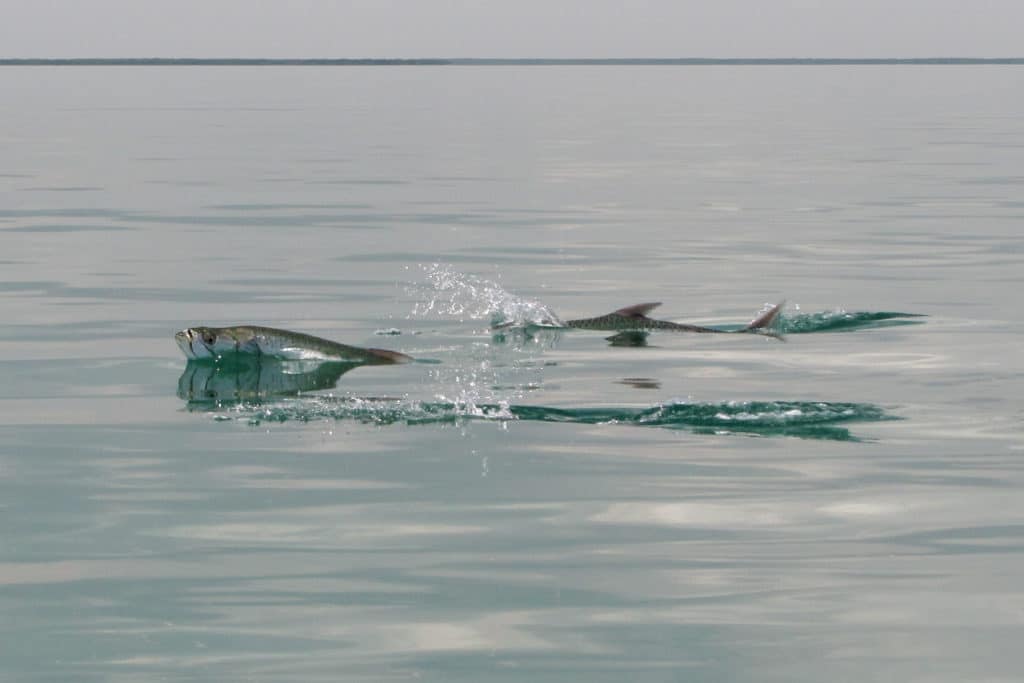
Top pros solve the spring migration riddle
Tarpon Fishing Gear
While even small tarpon are powerful and acrobatic, anglers should still tailor their tarpon fishing gear to the size of the fish they intend to target. This especially holds true for flies and lures. For sight-casting a 7- to 7 ½-foot spinning rod and a reel holding 250 yards of line is perfect. Novices may want to start in the 20- to 30-pound-class. Experienced anglers opt for 12- to 17-pound.
For small tarpon, scale down the tackle. Then 8- to 15-pound gear is better suited for the task. A 6 ½- to 7-foot rod will be best. And since baby tarpon won’t be making long runs, you can get by with smaller reels and more reduced line capacity. Fly anglers find 11- and 12-weight outfits standard, though some experts may go down to a 10-weight. For the babies, 7- to 9-weight gear is just right.
In inlets, passes and channels, a 20- to 30-pound conventional outfit or equivalent spinning gear is best, with emphasis on the lifting power of the rod, the line capacity and a smooth drag.
Tarpon have coarse jaws that wear through fishing line within seconds. Leaders are, therefore, a must, and 50- to 60-pound fluorocarbon is ideal.




